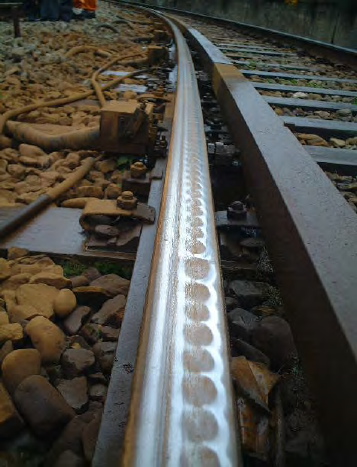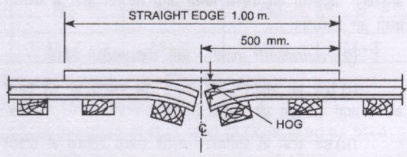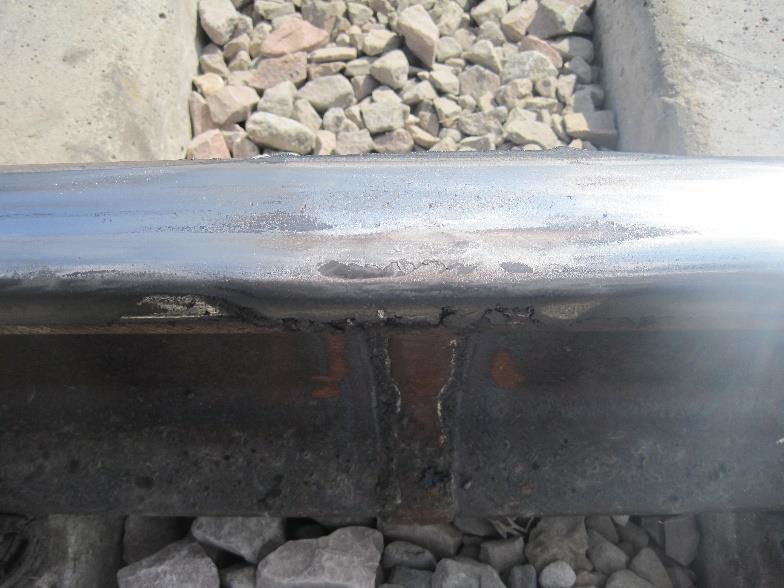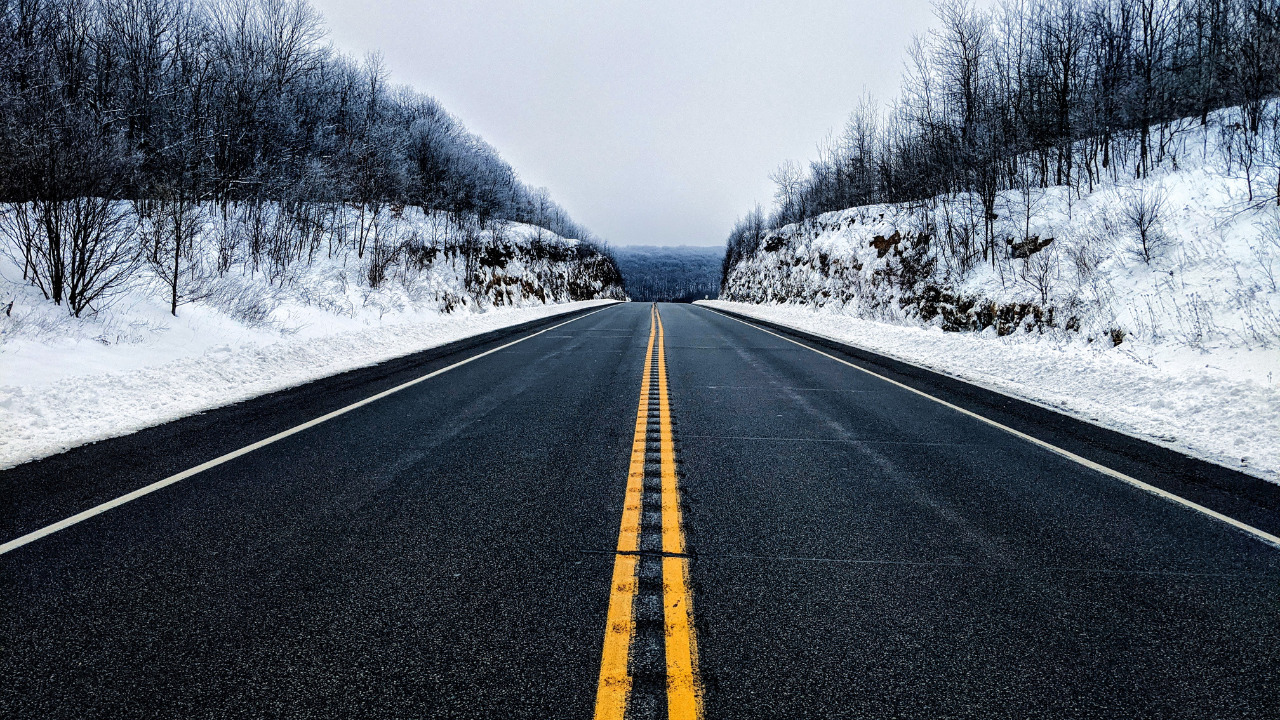In this article, we shall study the rails in railway tracks and the types of defects in them. We will also study the measures that can be taken to treat them so that they cause less damage to the rails.
Table of Contents
Rails
The members that are laid in form of two parallel lines and provide a leveled and continuous surface for the movements of trains are known as rails. They are similar to steel girders.
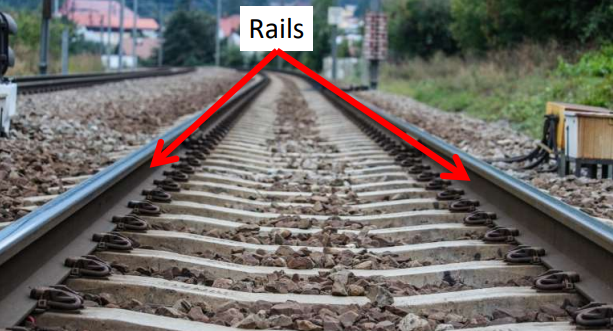
Defects in Rails
As rail goes through different types of stresses that are responsible for the occurrence of defects in the rails. Here we discuss some of the defects in the rails.
1)Rails Corrugations
The alternate ridges and the hollows that develop at the top surface of the rails are known as rails corrugations.
- They can be varying in size and shape, 0.05mm to 0.4mm in depth and 2 to 8 cm apart.
- They can be either short pitch or long pitch.
When the vehicle passes over such corrugation, an unpleasant sound is generated that may be due to locking or air in these corrugations are known as roaring rails. This unpleasant sound also causes discomfort for the passengers.
Causes of rails corrugation
There are some factors that contribute to the development and the occurrence of rails corrugation.
- High speed of trains
- Rigidity of railway tracks
- Coning of wheels
- Excessive tight or loose gauge
- Sudden application of brakes
- Steep gradient
- Non-uniformity of the diameter of engine wheels
- Existence of high humidity and dust in the atmosphere
- Vibration of rails
Prevention for rails corrugation
- The material for the composition of rails should be resistant to corrugation.
- Heat-treated alloy steel rails with relative hardness have the ability to resist corrugations.
Remedial Measures
- By grinding of rails
- By varying train’s speed and direction
2)Buckling of Rails
Buckling of rails occurs when the track goes out of its original position or alignment due to the prevention of free expansion of rails usually in hot weather because of temperature variation.
- It is the main cause for the derailment of vehicles.
- It also causes severe accidents.
Causes of buckling of rails
There are some of the causes due to which buckling is rails occurs.
- In-sufficient expansion gaps
- Insufficient ballast
- Tightness of joints
- Welded rails
- Excessive creep
- Non-lubrication of fish plates
Remedial Measures
- A sufficient expansion gap should be provided
- Provide less number of welded rails
- Joints should be tightened to the extent that prevents rails from expansion and contraction
- Lubrication should be done
- If welded rails are used then steel sleepers should also be provided and the rails should be anchored properly.
2)Hogging of Rails
The defect that occurs due to the bending of rail ends in a vertical direction is known as hogging of rails. It is mainly due to the worn end of the rail.
Causes of hogging of rails
There are some of the causes listed below:
- Poor maintenance of rail joints
- Faulty fastenings
- Yielding formation
Remedial Measures
By using these measures we can prevent rails from hogging and they can also be helpful to rectify those hogged rails.
Cropping of hogged rails: it can be done by replacing hogged rails with new ones. It is also very economical.
- Replacing: It can be done by cutting the ends of rails and replacing them with new rails.
- Welding: It is also a rectification method in which only worn ends of the rails can be improved by welding.
- De-hogging: it can be done with the help of a de-hogging machine.
3)Wear of Rails

Causes of wear of rails
The main causes of rail wear are given below:
- Due to the impact of moving loads
- Due to the braking of wheels
- The abrasion due to wheel-rail interaction
- Effect of climatic conditions
- Force exertion by locomotive during acceleration and retardation
- Excessive stresses
Remedial Measures
- By maintenance of the track
- Use of special alloy steel
- By increasing the number of sleepers at joints
- Providing check rails
- Providing lubrication oil
- Tightening of joints
4)Battering of Rails
In this defect, the ends of the rail get deflected or bent due to the battering action of wheels at the ends of the rail, which is known as battering of rails.
- It is due to the impact of a wheel at the ends of the rail.
- It is due to the excessive gap in joints.
5)Creep in Rails
It is the longitudinal movement of rails in the track in the direction of motion is known as a creep in rails.
- It can vary from negligible to a few centimeters
Causes of creep in rails
- Action of forces during acceleration and retardation
- Motion of wheels
- Due to expansion and contraction
- Due to bad quality sleepers
- Rails not fixed properly
Methods for Correction of Creep
a)Pulling back Method
- In this method, rails are pulled back according to the amount of creep manually or by using jacks.
- This method is costly
b)Fixing Creep Anchors
- In this method, a piece of cast iron is placed for the grip of the rails.
- It is an effective method that reduces the 75% chances of creep in rails.
7)Failure of Rails
There are some of the failures that occur in rails which are also included in the defects of rails.
- Split Head
- Crushed head
It is the failure that occurs at the weak end support because of loose fish plates.
- Horizontal Fissure
It is a type of failure in which a fracture occurs in the section of the rail and goes on increasing gradually. It has some causes:
- In-sufficient ballast
- Worn fish plates
- Transverse Fissure
It is a form of a fissure as a hole in the head of the rail. It is a round or oval bright spot that starts from the point inside the head of the rail.
- It is a manufacturing defect
- It can cause serious damage to the rails
- Shelling
It is a type of failure in the metal on the surface and around the rail that undergoes plastic deformation when the rail is subjected to heavy axial load.
Also read: Types of Railway Sleepers – Advantages and Disadvantages
Also Read: Highway Classification



